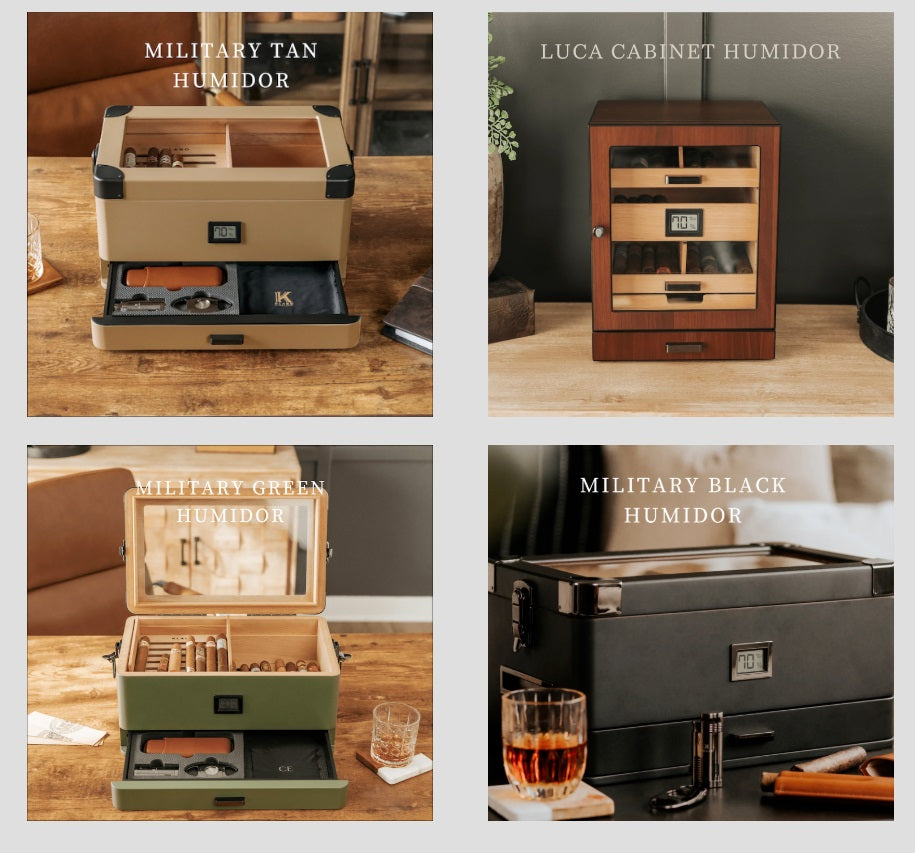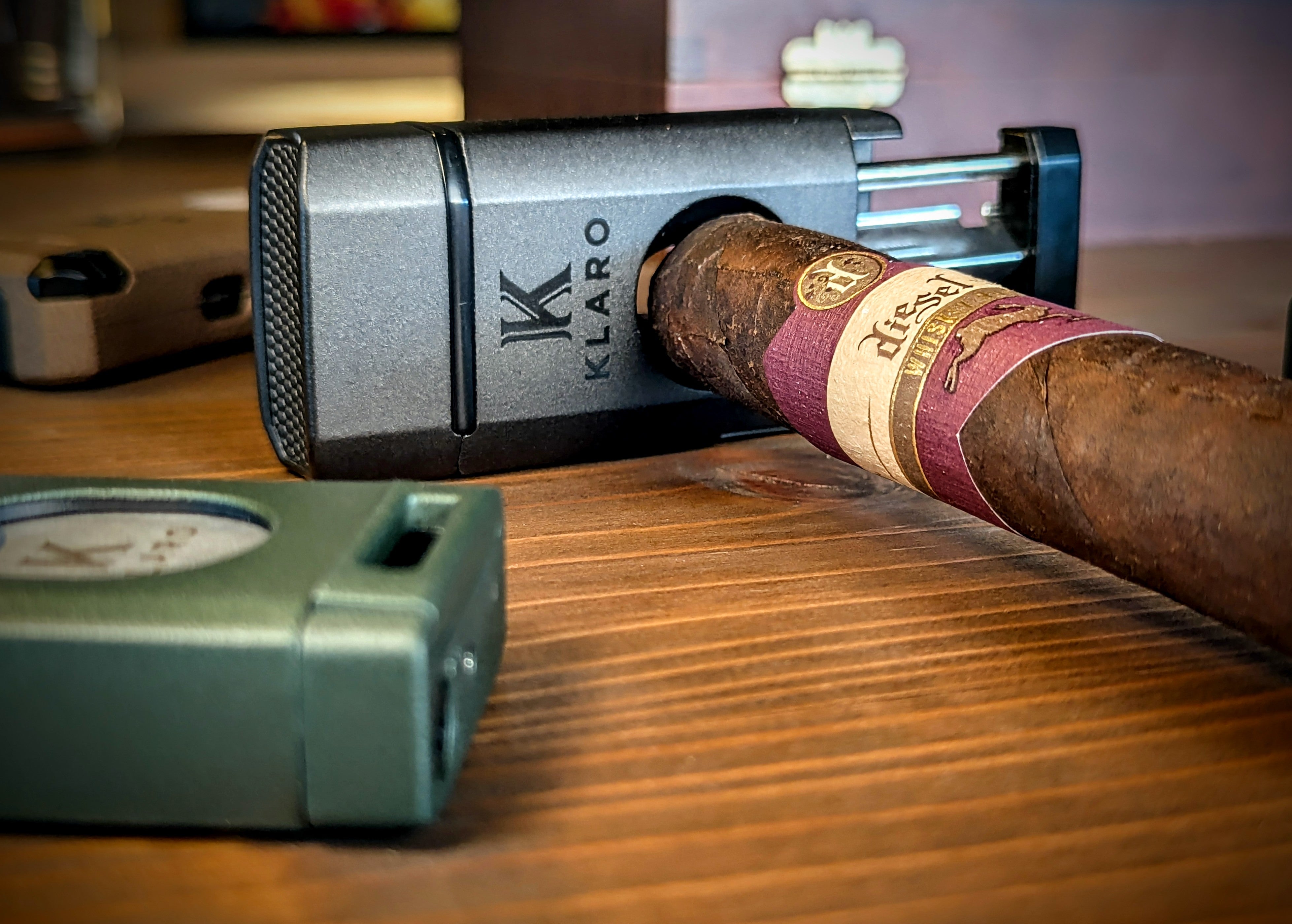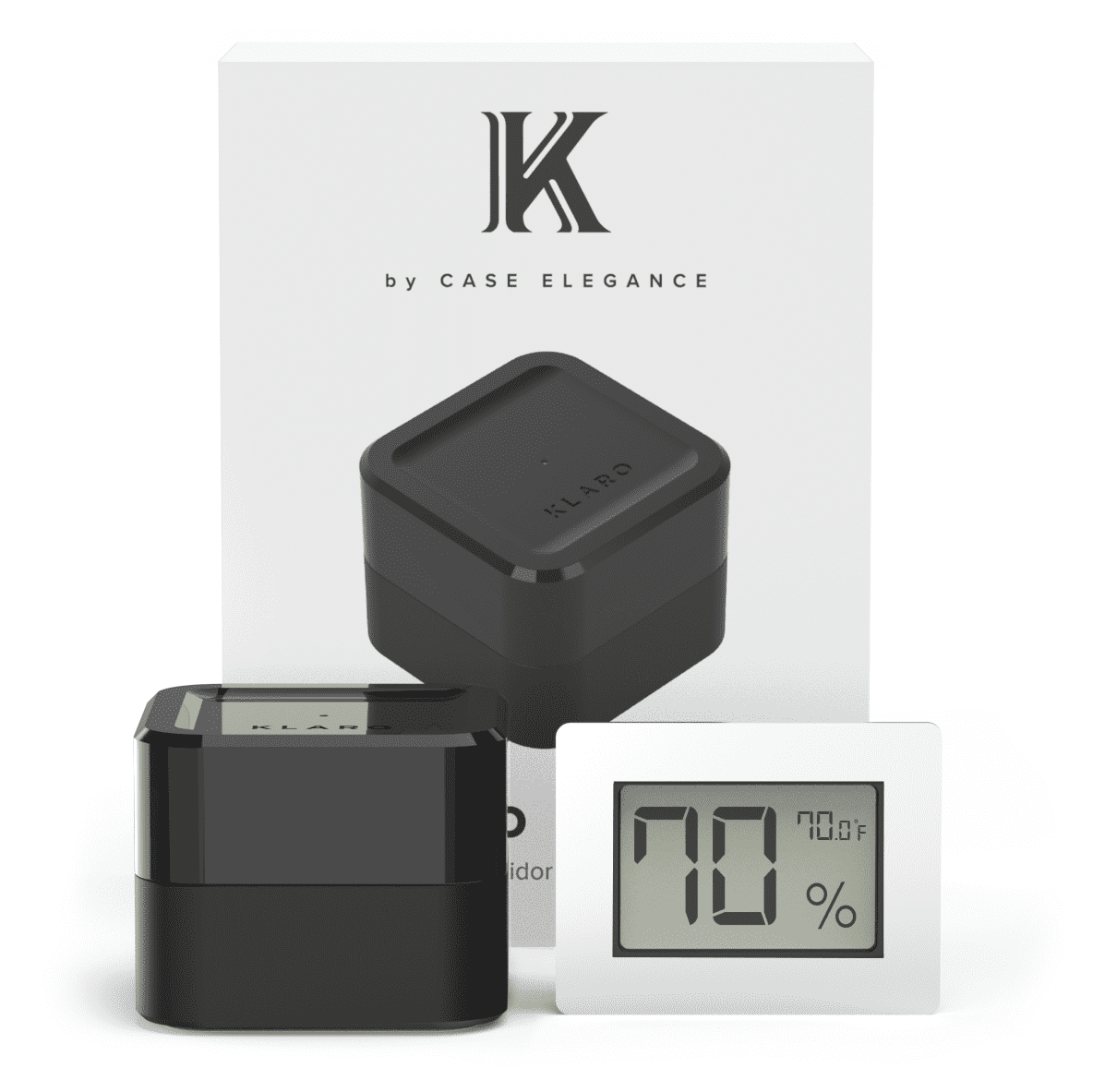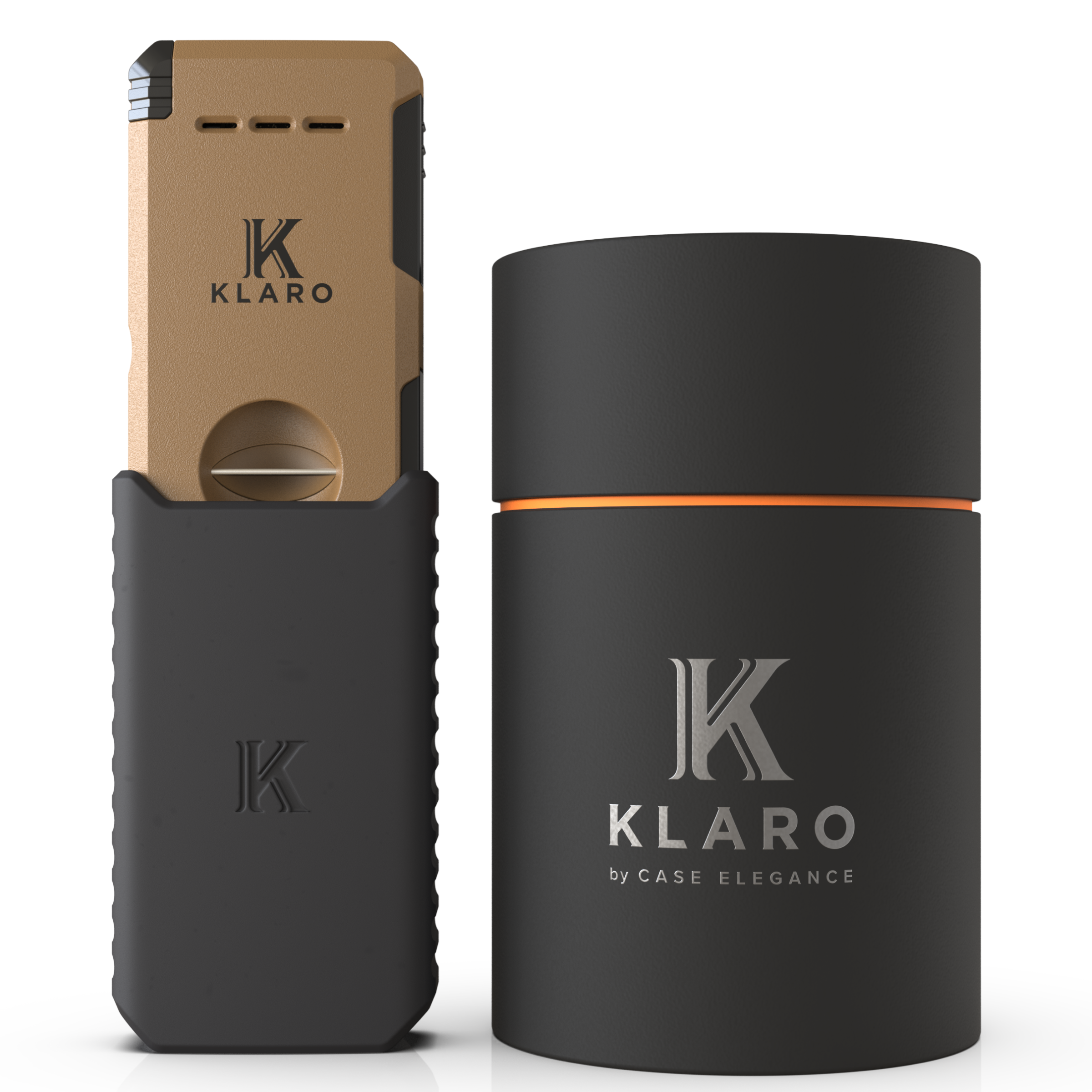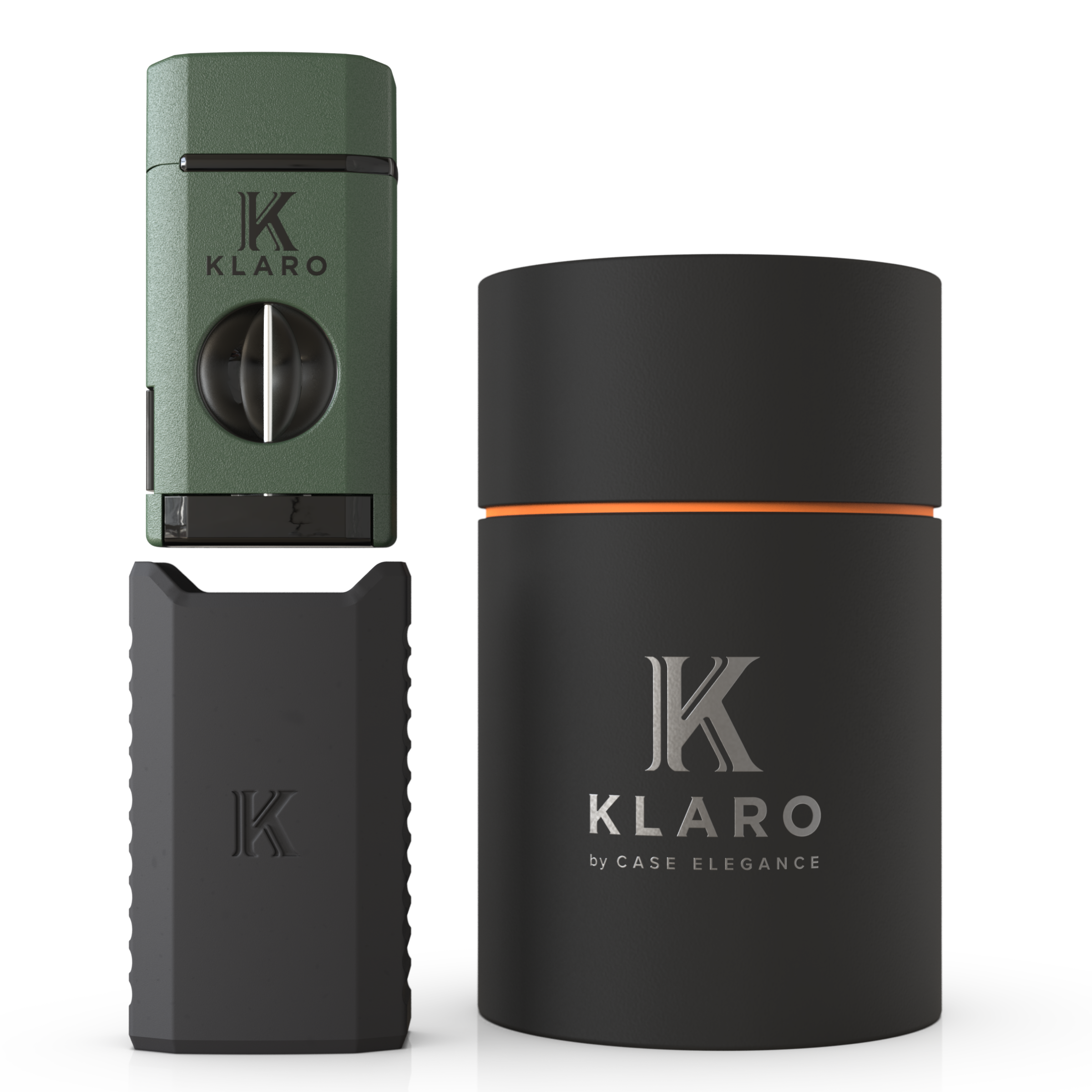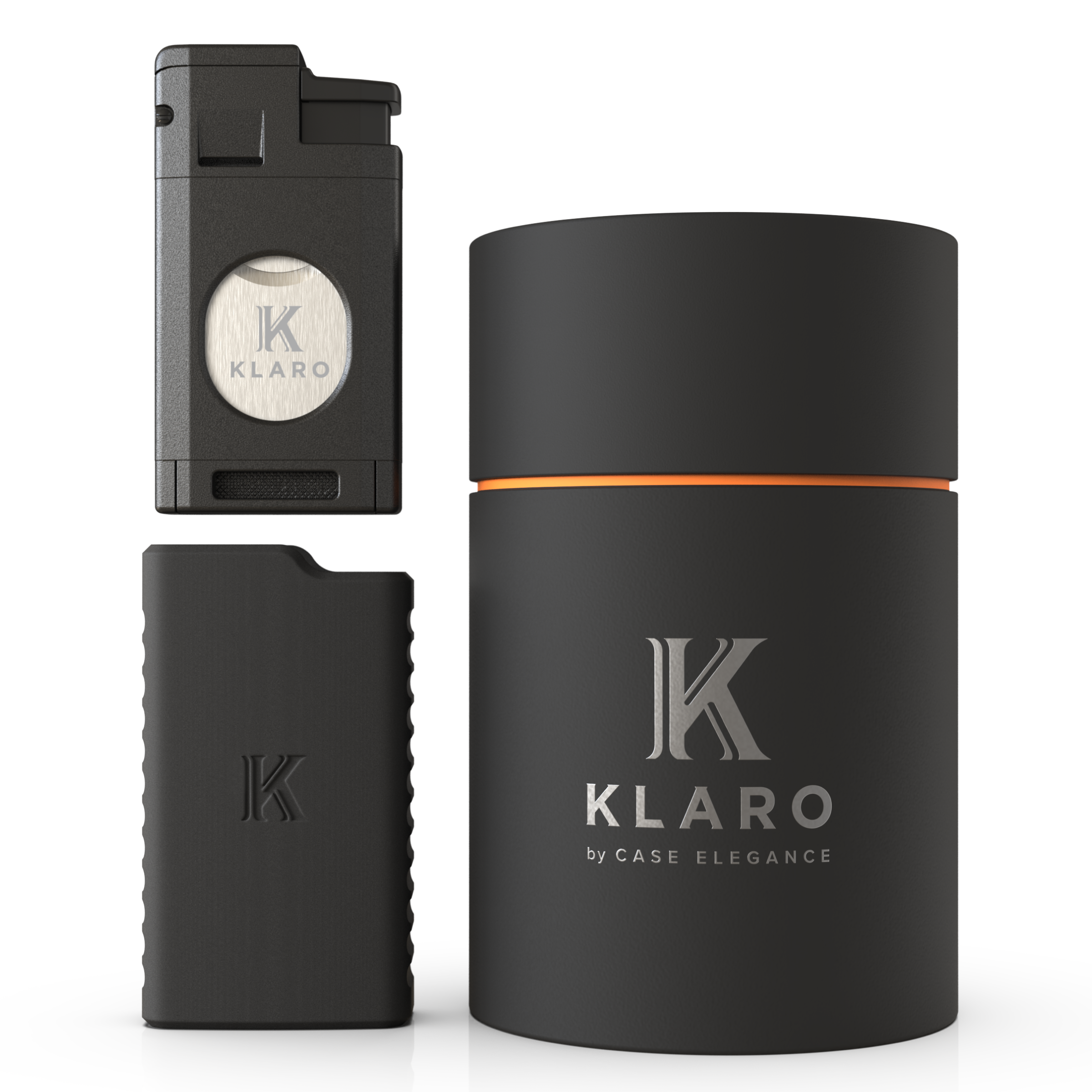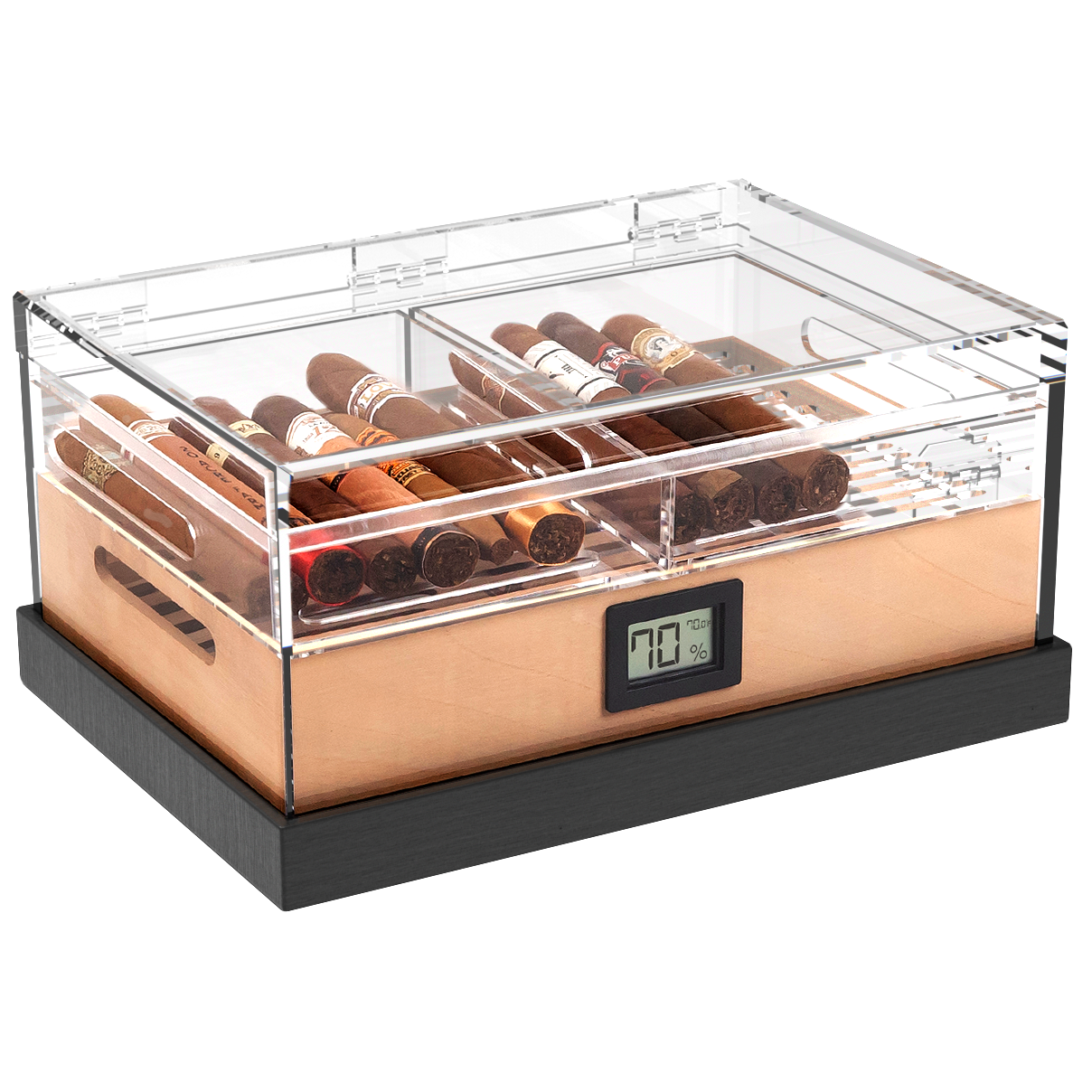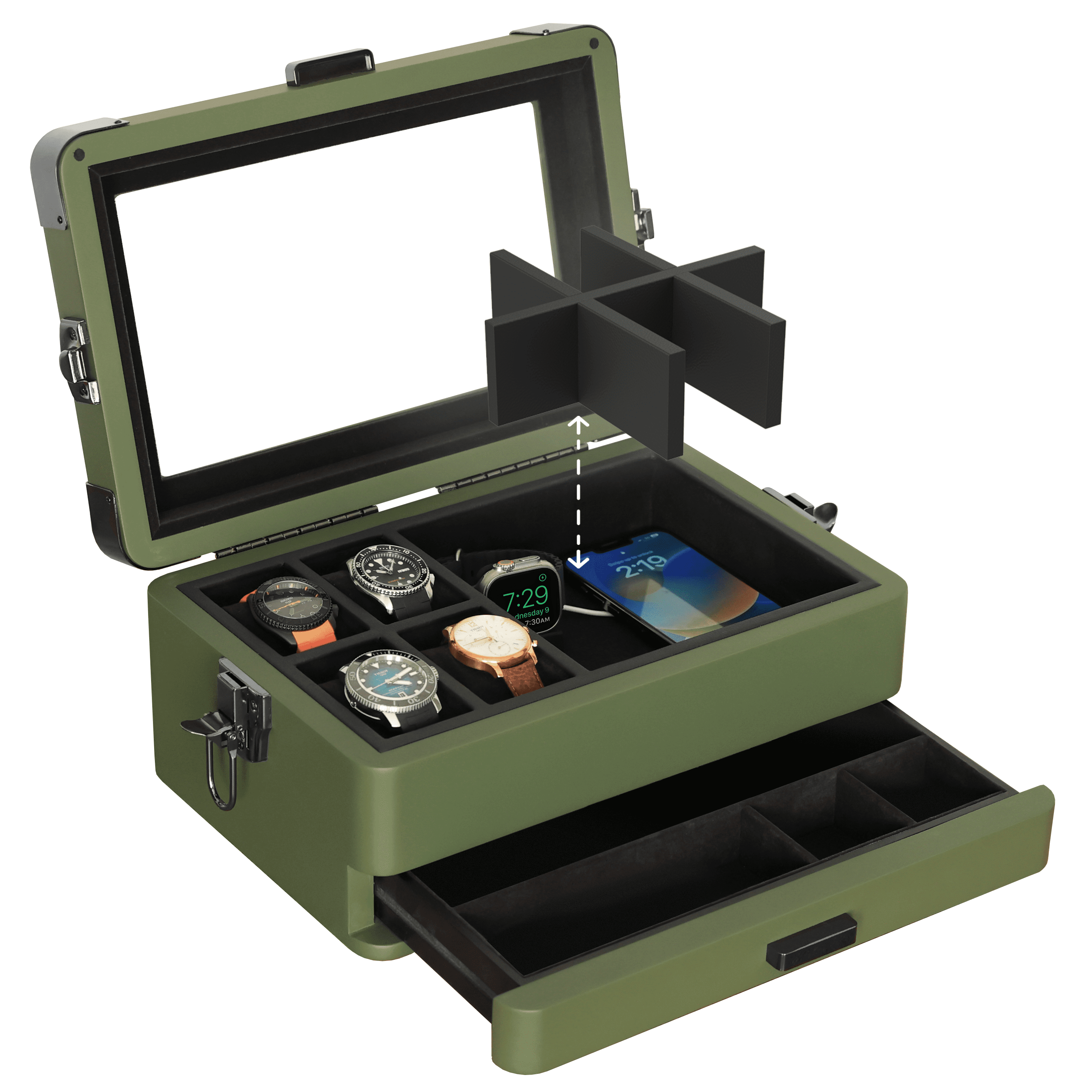The singular purpose of a good cigar humidor is to control the relative humidity of the storage environment in which these premium products reside until it's time for a quick cut and some heat from your trusty Overland torch lighter. So, if humidors essentially all do the same thing, then why are there so many options?
From converted ammo smoke cans and repurposed cigar boxes, to bespoke units that cost tens of thousands of dollars, you have a wide range of options to choose from in the humidor marketplace. So how do you know if you’re buying a humidor that makes sense for your cigar collection? You start by understanding the differences in various humidor types, keeping the following eight humidor traits in mind the entire time.
Size

The first filter that should be applied to your choice of humidor is size. How many cigars do you currently own, and how many do you expect to procure in the near future? Almost all humidors for sale will list a maximum quantity level to help prevent overloading, which can cause all manner of humidity issues to unfold over time. On the opposite end is the underfilled cigar humidor, which if the unit is large in size, can cause the few stogies that are stuffed inside to become oversaturated with humidity.
This is where the "⅓ humidor capacity" rule comes into play, for keeping your humidor at least a third filled with cigars will help regulate internal humidity, while preventing your cigar collection from getting oversaturated. So, if you only smoke ten cigars a month on average and restock regularly, you would only need a humidor with a capacity of around twenty-five to thirty cigars.
However, if you want to try your hand at collecting and aging cigars, a crowded humidor can quickly spiral out of control if you haven’t planned accordingly. This is why we suggest opting for one size up from what you feel you might need, as it is all too common for people to run out of humidor real estate rather than have entirely too much of it.
Wood
While acrylic, metal, and even carbon fiber humidors do exist, most cigar storage units are still built with wood or at least a certain quantity of this natural element. The reason for this is that wood has the unique ability to retain and release humidity into the air, and of all the trees on the planet there is no better than Spanish cedar. Even when using an acrylic or non-wood humidor, you’ll often see Spanish cedar walls, drawers, or shelves included inside to help achieve some level of equilibrium.
However, a 100% Spanish cedar humidor isn't all that great either, for it is entirely too soft for use on the exterior and will cost a hell of a lot more. This is why most humidors are typically manufactured from two different kinds of wood. Spanish cedar for the interior and then a separate, stronger type of wooden material for the exterior. Typically, you will find that cherry, walnut, mahogany, maple, acacia, and oak are the most common kinds of exterior woods being used in humidor manufacturing.
That said, be wary of any humidor being marketed with American red cedar, Honduran mahogany, or some other form of tree stuffed inside, for nothing comes close to matching the humidity-regulating capabilities that Spanish cedar encompasses.
Type

Nowadays, there is no shortage of humidor styles and types, and the creative team behind every Klaro product sold is partially to blame. Hell, searching by category alone is likely going to leave you feeling overwhelmed. From hardcore travel humidors and leather-bound bags to footlocker boxes and glass containers, the proverbial cigar barrel is virtually bottomless by this point.
However, bear in mind that the whole reason for this article is to help you determine what your cigar smoking and storing needs might be. What is it that you want or need in a humidor? Perhaps it could be one of the following humidor types, or maybe something a bit more exotic. You never know.
Travel Humidors
Travel humidors are perfect for when you’re heading somewhere with more than one cigar. May it be a weekend fishing trip, a week-long cruise, or just a night out with friends, these kinds of temporary humidor storage solutions offer all the protection your stogies need with minimal maintenance.
Acrylic Humidors
Typically more affordable, and fully transparent, acrylic humidors like the Felix line offer a modern style and a strong seal. Available in a wide array of sizes and configurations, this design can handle everything from a handful of cigars all the way up to hundreds of sticks, depending upon size of course. Just be sure that there is at least some form of Spanish cedar tray, divider, or basket inside for humidity regulation and aromatics.
Personal Humidors
Also referred to as a desktop humidor, these units are often what new cigar smokers start off with, as they usually fit between 25-50 cigars. Moderately priced, small in scale, easy to maintain, and even easier to move about, this humidor style is what most people think of when they contemplate cigar storage.
Humidor Cabinets
Vertically mounted sliding shelves, multi-tiered baskets, and customizable stacking solutions all make the glass-faced humidor cabinet a huge hit with those looking to stuff a ton of stogies into a single spot. This type of humidor is great for those looking for various storage solutions for an array of different vitolas or cigar sizes.
Hybrid Humidors
From repurposed 30-caliber ammo can humidors and glass cigar holder cannisters, to one-off carbon Kevlar containers and humidors cut from crystal, hybrid humidors incorporate many of the attributes found in classic designs and turn them into a whole new animal. While there can be additional perks associated with these unique kinds of cigar storage designs, oftentimes it boils down to aesthetics more than anything else.
Electronic Humidors
The crown jewel of any home cigar collector who can rationalize installing one of these is the temperature and humidity-controlled electronic humidor. With circulation fans, cooling and heating systems, and multi-stage filtration systems, this sort of purchase is where a cigar collector comes to the realization that they are officially an aficionado. That, or a hoarder. The lines tend to get a bit blurry around the 1,000-stick count. Either way, the Klaro Airo Fridgador has your hardcore cigar storing, organizing, aging, and rotating needs handled and demands a look if you have not already given one a gander.
Humidification System

From gels and beads to hydration sticks and humidor packs, humidification systems are what allow a humidor to regulate the relative humidity inside a humidor, and ultimately, keep your cigars in top form. On industrial-grade models and the aforementioned Fridgador units from Klaro, you’ll find electric humidification systems providing even more control and humidity fine-tuning.
Which is the best for your humidor? Well, that can be a tricky answer. Some of this comes down to preference, but consideration for practicality, price, lifecycle/longevity, refilling requirements, and ease of use all should come to mind.
Here at Klaro, we rely upon our patented Hydro Tray systems for our larger humidors, smaller Hydro Channel units for desktop humidors, and precalibrated humidity packs for certain hybrid-style cigar storage solutions. While the Hydro Tray and Hydro Channel require occasional humidity crystal pack changes and refilling, you can alter the level of humidity inside by selecting between a winter and regular humidor solution mixture. In contrast, humidor packs do not require any form of refilling or care, but once exhausted they will require replacement.
Aesthetics

Considering that many types of humidors are marketed as “furniture,” or at least some kind of display piece, having the right humidor aesthetics for the room in which it will reside is essential.
How your humidor looks should both complement and contrast with its surrounding environment, which is precisely why so many cigar smokers view their humidor as a means of expression. Ultimately, it is up to you though, for while sleek, and modern. While this look might appeal to some, many people still prefer traditional humidor aesthetics, and we totally understand why this look remains so timeless.
Accessory Trays

Humidors can do more than just hold cigars. Larger humidors often include a tray or two that house the various accessories necessary for smoking and storing cigars. From torch lighters and cedar spills to cutters, pokers, and humidor crystal backstock, the average cigar smoker has options aplenty when it comes to cigar gear storage.
Hygrometer

Whether internally mounted or external, most humidors come complete with a hygrometer of some sort. While the benefit of having an external hygrometer is as obvious as being able to check humidity while strolling by without having to crack that humidor seal, products like the Klaro Kobi can be easily read thanks to their angled internal housing and glass humidor top.
Now, as for the whole digital versus analog hygrometer debate, it is possible to find accurate versions of both. While some people may appreciate their retro aesthetics, the issue with analog hygrometers is that they are prone to misreading humidity levels and can be a pain to calibrate. In contrast, digital hygrometers generally tend to be more accurate, are easy to read, and rarely require calibrating. Additionally, digital hygrometers allow you to access humidity read-outs and temperatures via the patented Klaro Valet Smart Hygrometer and its corresponding app.
However, if you choose to use an analog hygrometer for the sake of aesthetics, just ensure you have it calibrated prior to putting the humidor to use in order to ensure accuracy.
Glass

Finally, there is the glass dilemma. Many humidors will come outfitted with a glass component on their cabinet door or in the lid, allowing an easy view of the cigars inside. This not only is practical and stylish, but it also means opening that hinged lid or door a lot less frequently. The less often the humidor opens, the more balanced the relative humidity inside will become.
But glass poses a problem, as it requires the use of an additional seal, which can be a major weak point, or leak point as we prefer to call it around here.
A fully wood humidor only has one seal for you to contend with, and that is where the lid or door meets the humidor's body. Any humidor worth a damn will maintain an airtight seal using built-in magnets, latches, and/or Spanish cedar wooden coping around the edge of the lid or door seal. An added glass component creates a far greater potential for an imperfect seal because now humidity, heat, contaminants, and other airborne elements can enter or leave the humidor in not one, but two areas. So, if you go with a glass-top humidor, invest in one with really good reviews from a reputable manufacturer to ensure a solid seal.
Parting Puffs

At the end of the day, buying a humidor really boils down to personal taste, cigar-storing needs, aesthetics, and financial backing. That, and doing a bit of research and ordering from a reputable humidor manufacturer. Hopefully, the information above has been of some assistance, and you can decide which the best type of humidor is for you and your cigar collection.

